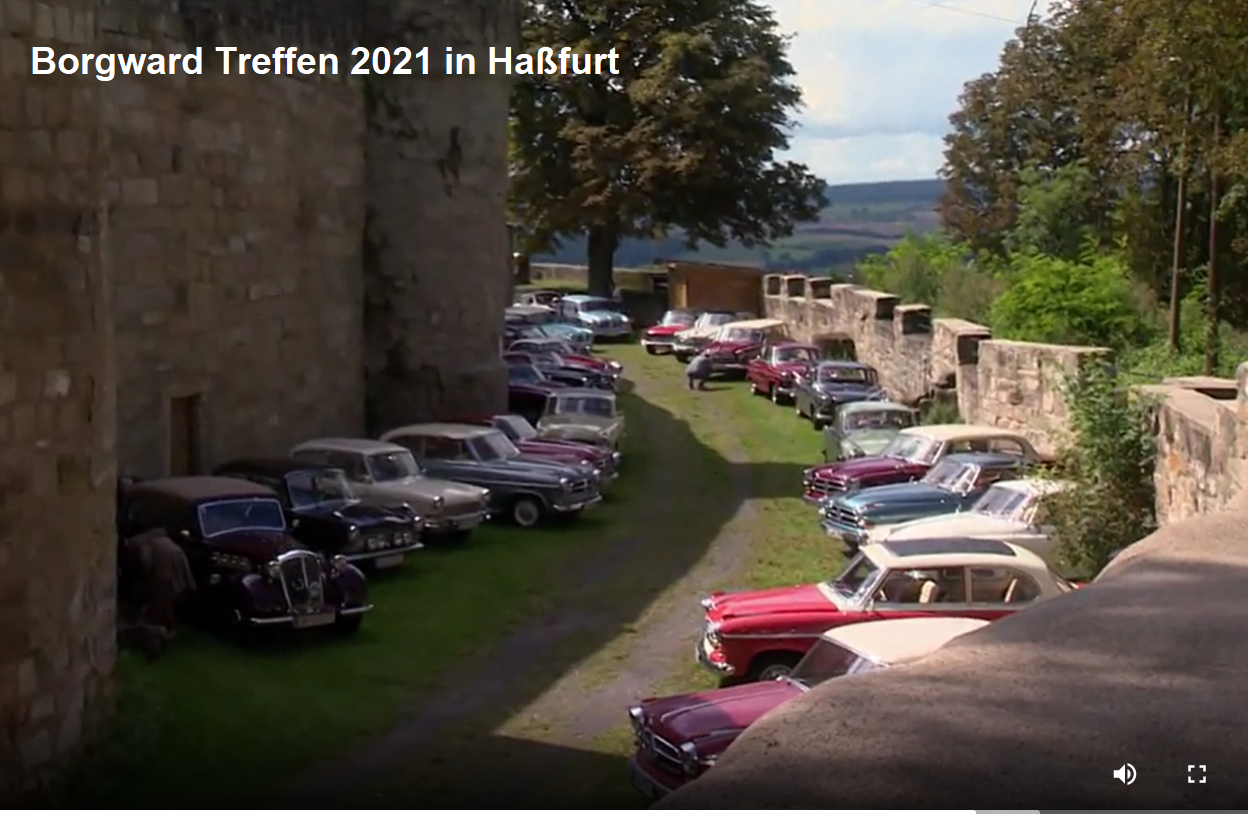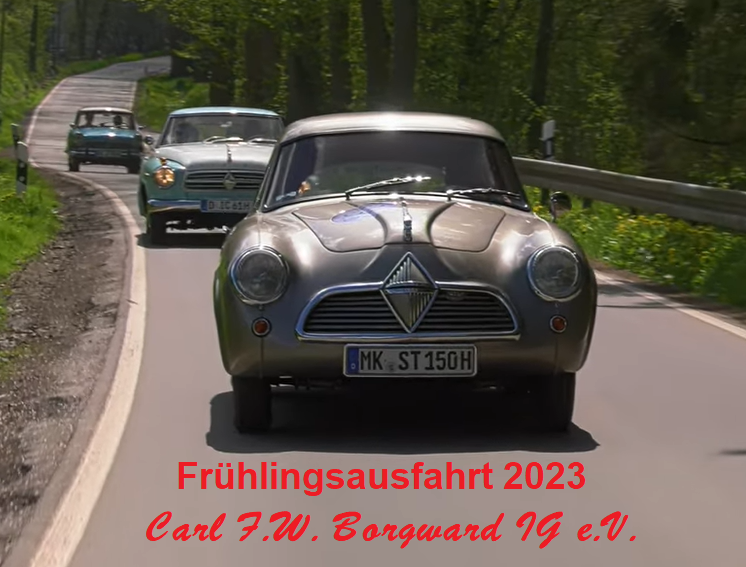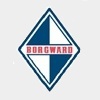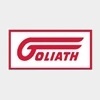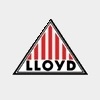- Beiträge: 511
- Dank erhalten: 901
- Aktuelle Seite:
- Home

- Forum

- Technik, Restaurierung

- Technik

- Getriebe Instandsetzung, Bericht von Kris Brickman
Getriebe Instandsetzung, Bericht von Kris Brickman
- Jadegrün
-
 Autor
Autor
- Offline
- Siggi
Weniger
Mehr
03 Mai 2017 13:31 - 03 Mai 2017 13:37 #22642
von Jadegrün
Isabella Coupe 1960 in Jadegrün,
der Combi 1960 in Aeroblau ist bald fertig.
Getriebe Instandsetzung, Bericht von Kris Brickman wurde erstellt von Jadegrün
Ich hab bei Faceboock den u.A. Bericht gefunden, finde daß der
hier veröffentlicht werden sollte. Einverständnis vom Autor liegt mir vor.
Vielleicht kann jemand diesen Bericht übersetzen.
As part of my restoration of a ’57 Isabella Saloon, I recently went through the gearbox to rewind the 65,000 miles it had on it. I am a full time Porsche technician by day, so I’m very familiar with German transmissions (not that they’re much different than anything else.) Manual transmissions haven’t changed much through the years and unlike their automatic counterparts, are rather primitive in design. The wear items are found in the form of synchronizers and bearings. Repairs are often as simple as removing gears, bushings, and bearings from shafts and reassembling with new pieces. If you have thought about attempting repairs on your own, I hope this article helps you determine if a job like this is within your skill set. The factory manual has a well-written section on this repair, but a real-world example is a great supplement! Remember to check and double check that the shifting linkage and cables are adjusted properly before condemning a transmission! If you experience grinding, this is likely a gearbox problem, but it’s also possible that you are unintentionally attempting to shift into reverse while moving forward!
Things you’ll need (in addition to basic hand tools):
1. 1 3/16 Socket 6. Assorted gear pullers
2. 14 mm swivel head socket 7. Hydraulic Press (optional)
3. Impact driver with slotted screw bit 8. Propane Torch
4. Bench Vise
5. Homemade mounting jig (more on this later)
Drain the gear oil before removing the transmission if possible. Its easiest and cleanest at this point, and also it will be lighter to move around the work area when its time! Also, its always good practice to mark the relationship of the driveshaft to the output yoke (tailshaft.)After some heavy lifting and wrench turning, the gearbox will be on the bench, likely with a good coating of many years of oil on it.
Start by removing the throwout bearing, this will make the bell housing nuts more accessible. Remove the 5 14mm hex nuts that secure the bell housing. A few smacks with a rubber hammer should help break the seal of that old crusty gasket. Suddenly the package is much smaller! Now it’s time to make up a mounting fixture for the remainder of the work. It is shown here in the factory manual, and my (admittedly rough) copy.
Things to consider when making this up:
1. It needs to be strong! I had some leftover flat mild steel pieces that I used for mine, but it is not strong enough. I had to temporarily support the tailshaft until I got some more weight out of it! I recommend ¼ steel if you have the tooling to work with something that thick.
2. The horseshoe cutout that must be made needs not be pretty, however it MUST allow full access to the countershaft bearing and the tooling holes on either side.
3. It must be long enough to clamp into the bench vise without the case hitting the rear jaw of the vise
Now we will remove the gearbox cover. Borgward made things easy for us by designing the entire shifting mechanism into the top cover. This makes for a much simpler disassembly/assembly process. There are just 4 nuts securing the cover, with a paper gasket underneath. Again, a rubber hammer will be useful in breaking that seal. Do not use a screwdriver or other pry devices to work the cover off! A very thin paper gasket does the job of sealing when we’re done. Even small surface imperfections can result in leaks. Set the top cover aside for now.
We can now see the real meat of the project. This is when we will closely inspect the condition of our boxes. Grab some paper and a pen, you’ll likely need it! I will do my best to explain the wear to look for. First let us familiarize ourselves with what we see. This is a picture of the mainshaft, note that the input shaft is no longer attached. 4th gear components live on the input shaft. Never the less, the signs of wear we look for are the same.
Having driven your car before disassembling, you likely know exactly which gears you expect to see problems with. However even gears that seemed to engage well can have wear that will soon lead to more obvious symptoms. In theory, the only parts of a synchromesh gear box that should wear are the block rings. These are the components that use friction to match shaft speeds, thus they are consumable. After a threshold of wear occurs, shaft speeds are not always equal as the operator engages the synchromesh teeth. This is classic gear grind. As this continues to occur, the hardened metal teeth of the operator and gear collide. Heavy wear begins to show rather quickly and in severe cases entire teeth will separate.
Diagnosis:
Generally, the lower gears will experience more wear. Since we have a picture of what new components look like, we can easily spot problem areas within our boxes. The exception to this is identifying block ring wear. Diagnosis here involves measuring with a feeler blade. In my experience though, it is silly not replace all 4 of these. The price is not high, and we’re already in here!
Be sure to also look at the teeth of the operators that mesh with the teeth pictured as they can also be damaged. Bearing diagnosis will be performed later, with the bearings removed from the shafts.
Disassembly:
Remove the tail housing as per the factory service manual. This portion is very straight forward. The only thing I would add to this is to mark the relationship between the output shaft and the drive flange before pulling it off. This will keep the driveline balanced during reassembly.
From here forward the process is simple to understand, but more difficult to actually perform. This is because we need to get creative in order to remove the countershaft bearings from the case. Borgward had a fancy puller tool with very narrow arms that reached into the bores of the case to pull the bearings. I could not find anything similar, so I took a different approach.
Here you can see that I welded an old bearing race to the face of the countershaft bearing. This gave me a large lip that I could pull on with a suitable puller. Of course if you go with something similar to this, you’ll need some fresh countershaft bearings! Perform this on both sides to allow the countershaft to fall down and out of mesh with the main shaft.
Now it is time to remove the main shaft and input shaft. The circlip grooves of these upper bearings provide a nice point to pull from, thus there is no need to use the welder again. Work on the side of the input shaft first. Once free, we have plenty of room to maneuver the main shaft out!
Once the shafts are on the bench, we can disassemble them to replace components as needed. This amount of disassembly necessary will vary with each gear box, so I will offer a few tips and tricks.
If this is your first time, take pictures as you go along with plenty of notes. It is good practice to mark the outside or inside of every piece so that you can re-assemble with confidence. Build yourself a stand like the one pictured below to securely hold each component in its proper order. Heating a gear or bushing with propane expands the metal so that interference fit parts can simply slide together. A hydraulic press in not necessary with most jobs on this particular box, but it certainly makes things easier. As you disassemble, wash the gear oil from each of the ball bearings and spin them in your hand. Noisy bearings should be replaced!
Assembly is the reverse of disassembly! I hope that this technical article has served to provide you a better idea of whether or not this project is for you! With spares becoming more difficult to find, we must begin to learn about repairing these boxes internally. I am happy to answer any questions you might have via email at Diese E-Mail-Adresse ist vor Spambots geschützt! Zur Anzeige muss JavaScript eingeschaltet sein!. I can also offer rebuilding services to anyone in need that is not comfortable doing the job at home. Good luck and have fun!
Kris Brickman
hier veröffentlicht werden sollte. Einverständnis vom Autor liegt mir vor.
Vielleicht kann jemand diesen Bericht übersetzen.
As part of my restoration of a ’57 Isabella Saloon, I recently went through the gearbox to rewind the 65,000 miles it had on it. I am a full time Porsche technician by day, so I’m very familiar with German transmissions (not that they’re much different than anything else.) Manual transmissions haven’t changed much through the years and unlike their automatic counterparts, are rather primitive in design. The wear items are found in the form of synchronizers and bearings. Repairs are often as simple as removing gears, bushings, and bearings from shafts and reassembling with new pieces. If you have thought about attempting repairs on your own, I hope this article helps you determine if a job like this is within your skill set. The factory manual has a well-written section on this repair, but a real-world example is a great supplement! Remember to check and double check that the shifting linkage and cables are adjusted properly before condemning a transmission! If you experience grinding, this is likely a gearbox problem, but it’s also possible that you are unintentionally attempting to shift into reverse while moving forward!
Things you’ll need (in addition to basic hand tools):
1. 1 3/16 Socket 6. Assorted gear pullers
2. 14 mm swivel head socket 7. Hydraulic Press (optional)
3. Impact driver with slotted screw bit 8. Propane Torch
4. Bench Vise
5. Homemade mounting jig (more on this later)
Drain the gear oil before removing the transmission if possible. Its easiest and cleanest at this point, and also it will be lighter to move around the work area when its time! Also, its always good practice to mark the relationship of the driveshaft to the output yoke (tailshaft.)After some heavy lifting and wrench turning, the gearbox will be on the bench, likely with a good coating of many years of oil on it.
Start by removing the throwout bearing, this will make the bell housing nuts more accessible. Remove the 5 14mm hex nuts that secure the bell housing. A few smacks with a rubber hammer should help break the seal of that old crusty gasket. Suddenly the package is much smaller! Now it’s time to make up a mounting fixture for the remainder of the work. It is shown here in the factory manual, and my (admittedly rough) copy.
Things to consider when making this up:
1. It needs to be strong! I had some leftover flat mild steel pieces that I used for mine, but it is not strong enough. I had to temporarily support the tailshaft until I got some more weight out of it! I recommend ¼ steel if you have the tooling to work with something that thick.
2. The horseshoe cutout that must be made needs not be pretty, however it MUST allow full access to the countershaft bearing and the tooling holes on either side.
3. It must be long enough to clamp into the bench vise without the case hitting the rear jaw of the vise
Now we will remove the gearbox cover. Borgward made things easy for us by designing the entire shifting mechanism into the top cover. This makes for a much simpler disassembly/assembly process. There are just 4 nuts securing the cover, with a paper gasket underneath. Again, a rubber hammer will be useful in breaking that seal. Do not use a screwdriver or other pry devices to work the cover off! A very thin paper gasket does the job of sealing when we’re done. Even small surface imperfections can result in leaks. Set the top cover aside for now.
We can now see the real meat of the project. This is when we will closely inspect the condition of our boxes. Grab some paper and a pen, you’ll likely need it! I will do my best to explain the wear to look for. First let us familiarize ourselves with what we see. This is a picture of the mainshaft, note that the input shaft is no longer attached. 4th gear components live on the input shaft. Never the less, the signs of wear we look for are the same.
Having driven your car before disassembling, you likely know exactly which gears you expect to see problems with. However even gears that seemed to engage well can have wear that will soon lead to more obvious symptoms. In theory, the only parts of a synchromesh gear box that should wear are the block rings. These are the components that use friction to match shaft speeds, thus they are consumable. After a threshold of wear occurs, shaft speeds are not always equal as the operator engages the synchromesh teeth. This is classic gear grind. As this continues to occur, the hardened metal teeth of the operator and gear collide. Heavy wear begins to show rather quickly and in severe cases entire teeth will separate.
Diagnosis:
Generally, the lower gears will experience more wear. Since we have a picture of what new components look like, we can easily spot problem areas within our boxes. The exception to this is identifying block ring wear. Diagnosis here involves measuring with a feeler blade. In my experience though, it is silly not replace all 4 of these. The price is not high, and we’re already in here!
Be sure to also look at the teeth of the operators that mesh with the teeth pictured as they can also be damaged. Bearing diagnosis will be performed later, with the bearings removed from the shafts.
Disassembly:
Remove the tail housing as per the factory service manual. This portion is very straight forward. The only thing I would add to this is to mark the relationship between the output shaft and the drive flange before pulling it off. This will keep the driveline balanced during reassembly.
From here forward the process is simple to understand, but more difficult to actually perform. This is because we need to get creative in order to remove the countershaft bearings from the case. Borgward had a fancy puller tool with very narrow arms that reached into the bores of the case to pull the bearings. I could not find anything similar, so I took a different approach.
Here you can see that I welded an old bearing race to the face of the countershaft bearing. This gave me a large lip that I could pull on with a suitable puller. Of course if you go with something similar to this, you’ll need some fresh countershaft bearings! Perform this on both sides to allow the countershaft to fall down and out of mesh with the main shaft.
Now it is time to remove the main shaft and input shaft. The circlip grooves of these upper bearings provide a nice point to pull from, thus there is no need to use the welder again. Work on the side of the input shaft first. Once free, we have plenty of room to maneuver the main shaft out!
Once the shafts are on the bench, we can disassemble them to replace components as needed. This amount of disassembly necessary will vary with each gear box, so I will offer a few tips and tricks.
If this is your first time, take pictures as you go along with plenty of notes. It is good practice to mark the outside or inside of every piece so that you can re-assemble with confidence. Build yourself a stand like the one pictured below to securely hold each component in its proper order. Heating a gear or bushing with propane expands the metal so that interference fit parts can simply slide together. A hydraulic press in not necessary with most jobs on this particular box, but it certainly makes things easier. As you disassemble, wash the gear oil from each of the ball bearings and spin them in your hand. Noisy bearings should be replaced!
Assembly is the reverse of disassembly! I hope that this technical article has served to provide you a better idea of whether or not this project is for you! With spares becoming more difficult to find, we must begin to learn about repairing these boxes internally. I am happy to answer any questions you might have via email at Diese E-Mail-Adresse ist vor Spambots geschützt! Zur Anzeige muss JavaScript eingeschaltet sein!. I can also offer rebuilding services to anyone in need that is not comfortable doing the job at home. Good luck and have fun!
Kris Brickman
Isabella Coupe 1960 in Jadegrün,
der Combi 1960 in Aeroblau ist bald fertig.
Letzte Änderung: 03 Mai 2017 13:37 von Jadegrün.
Folgende Benutzer bedankten sich: 369600coupe, nr345
Bitte Anmelden oder Registrieren um der Konversation beizutreten.
- 369600coupe
- Abwesend
Weniger
Mehr
- Beiträge: 653
- Dank erhalten: 898
03 Mai 2017 15:30 #22645
von 369600coupe
369600coupe antwortete auf Aw: Getriebe Instandsetzung, Bericht von Kris Brickman
Hallo Sigi,
sind die Bilder abhanden gekommen?
Schraubergruß
Rolf
sind die Bilder abhanden gekommen?
Schraubergruß
Rolf
Bitte Anmelden oder Registrieren um der Konversation beizutreten.
- Jadegrün
-
 Autor
Autor
- Offline
- Siggi
Weniger
Mehr
- Beiträge: 511
- Dank erhalten: 901
03 Mai 2017 15:56 #22648
von Jadegrün
Isabella Coupe 1960 in Jadegrün,
der Combi 1960 in Aeroblau ist bald fertig.
Jadegrün antwortete auf Aw: Getriebe Instandsetzung, Bericht von Kris Brickman
ich hoffe das Joachim die einstellen kann. 
Isabella Coupe 1960 in Jadegrün,
der Combi 1960 in Aeroblau ist bald fertig.
Folgende Benutzer bedankten sich: 369600coupe
Bitte Anmelden oder Registrieren um der Konversation beizutreten.
- borgideluxe
-
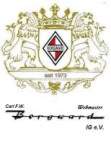
- Offline
Weniger
Mehr
- Beiträge: 4648
- Dank erhalten: 11775
03 Mai 2017 16:47 #22649
von borgideluxe
Webmaster und Moderator des Forums
der C.F.W. Borgward IG e.V.
Dieser Beitrag enthält einen Anhang.
borgideluxe antwortete auf Aw: Getriebe Instandsetzung, Bericht von Kris Brickman
Hallo,
hier das Original mit den Bildern.
Wenn jemand das Ganze übersetzt, dann bitte in Word, damit man die Bilder anschließend mit einfügen kann.
Gruß
Joachim
hier das Original mit den Bildern.
Wenn jemand das Ganze übersetzt, dann bitte in Word, damit man die Bilder anschließend mit einfügen kann.
Gruß
Joachim
Webmaster und Moderator des Forums
der C.F.W. Borgward IG e.V.
Dieser Beitrag enthält einen Anhang.
Bitte anmelden (oder registrieren) um ihn zu sehen.
Folgende Benutzer bedankten sich: Jadegrün, 369600coupe, nr345
Bitte Anmelden oder Registrieren um der Konversation beizutreten.
- 369600coupe
- Abwesend
Weniger
Mehr
- Beiträge: 653
- Dank erhalten: 898
03 Mai 2017 22:02 #22652
von 369600coupe
369600coupe antwortete auf Aw: Getriebe Instandsetzung, Bericht von Kris Brickman
Schöner und hilfreicher Bericht.
Schon witzig aus heutiger Sicht, dass jemand ein fast neues Getriebe mit nur 65tausend Meilen zerlegt und auch noch Synchronringe dafür kaufen kann, da sie ja nix Kosten, so zumindest der Verfasser.
Das ist ja wohl heute gänzlich anders!
Sigi: Wie alt ist der Bericht?
Leider geht die Anleitung nicht auf die heute mehr brennende Situation ein, die Anlaufscheiben zwischen den Gangrädern so mit (nicht verfügbaren) Paßscheiben anzupassen, dass das vorgeschriebene Spiel von 0,1 bis 0,15mm wieder herzustellen ist. Das war hier aufgrund der Laufleistung sicher noch kein Thema, aber jenseits der 200tausend km schon.
Arbeite gerade bei meiner Überholung daran.
Paßscheiben nach DIN 988 sind nur teilweise verwendbar. Eigentlich braucht man Sonderanfertigungen, oder halt Originale. Gibt es den sowas noch?
Schraubergrüße
Rolf
Schon witzig aus heutiger Sicht, dass jemand ein fast neues Getriebe mit nur 65tausend Meilen zerlegt und auch noch Synchronringe dafür kaufen kann, da sie ja nix Kosten, so zumindest der Verfasser.
Das ist ja wohl heute gänzlich anders!
Sigi: Wie alt ist der Bericht?
Leider geht die Anleitung nicht auf die heute mehr brennende Situation ein, die Anlaufscheiben zwischen den Gangrädern so mit (nicht verfügbaren) Paßscheiben anzupassen, dass das vorgeschriebene Spiel von 0,1 bis 0,15mm wieder herzustellen ist. Das war hier aufgrund der Laufleistung sicher noch kein Thema, aber jenseits der 200tausend km schon.
Arbeite gerade bei meiner Überholung daran.
Paßscheiben nach DIN 988 sind nur teilweise verwendbar. Eigentlich braucht man Sonderanfertigungen, oder halt Originale. Gibt es den sowas noch?
Schraubergrüße
Rolf
Folgende Benutzer bedankten sich: Jadegrün
Bitte Anmelden oder Registrieren um der Konversation beizutreten.
- Jadegrün
-
 Autor
Autor
- Offline
- Siggi
Weniger
Mehr
- Beiträge: 511
- Dank erhalten: 901
04 Mai 2017 14:51 - 04 Mai 2017 15:13 #22655
von Jadegrün
Isabella Coupe 1960 in Jadegrün,
der Combi 1960 in Aeroblau ist bald fertig.
Jadegrün antwortete auf Aw: Getriebe Instandsetzung, Bericht von Kris Brickman
Hallo Rolf,
Ich steh mit Kris im Kontakt über den Messenger von Facebook.
Hier seine Antwort:
The artical was written about a year ago. Are you asking where to buy
synchromesh rings and other parts?
Der Bericht wurde vor etwa einem Jahr geschrieben. Bist du gefragt,
wo man Synchronringe und andere Teile kaufen kann?
mal sehen ob ich etwas in Erfahrung bringen kann.
weiterer Kontakt:
Er hat Originale Ersatzteile für den Wideraufbau benutzt, möchte aber gerne
über DIN 988 mehr erfahren
LG Siggi
Ich steh mit Kris im Kontakt über den Messenger von Facebook.
Hier seine Antwort:
The artical was written about a year ago. Are you asking where to buy
synchromesh rings and other parts?
Der Bericht wurde vor etwa einem Jahr geschrieben. Bist du gefragt,
wo man Synchronringe und andere Teile kaufen kann?
mal sehen ob ich etwas in Erfahrung bringen kann.
weiterer Kontakt:
Er hat Originale Ersatzteile für den Wideraufbau benutzt, möchte aber gerne
über DIN 988 mehr erfahren
LG Siggi
Isabella Coupe 1960 in Jadegrün,
der Combi 1960 in Aeroblau ist bald fertig.
Letzte Änderung: 04 Mai 2017 15:13 von Jadegrün.
Folgende Benutzer bedankten sich: borgideluxe, 369600coupe
Bitte Anmelden oder Registrieren um der Konversation beizutreten.
- Peter Guthörl
-

- Offline
Weniger
Mehr
- Beiträge: 73
- Dank erhalten: 101
04 Mai 2017 15:59 #22656
von Peter Guthörl
Peter Guthörl antwortete auf Aw: Getriebe Instandsetzung, Bericht von Kris Brickman
Folgende Benutzer bedankten sich: borgideluxe, Jadegrün
Bitte Anmelden oder Registrieren um der Konversation beizutreten.
- 369600coupe
- Abwesend
Weniger
Mehr
- Beiträge: 653
- Dank erhalten: 898
04 Mai 2017 23:11 - 04 Mai 2017 23:13 #22658
von 369600coupe
369600coupe antwortete auf Aw: Getriebe Instandsetzung, Bericht von Kris Brickman
Hallo zusammen,
ja den Link zu Agrolager kenne ich, dort sind alle Lager für das Getriebe beziehbar,
außer dem 6205 in C2.
Die Paßscheiben habe ich hier bezogen, da das Sortiment besser ist.
www.nastvogel.de/scheiben-ringe/passsche...in-988-passscheiben/
Für unsere Zwecke habe ich folgende Scheiben, als besten Kompromiß ausfindig gemacht und gerade heute auch verbaut:
30 x 42 x 0,1 = 1. Gang.... Ideal wäre 30 x 52
35 x 45 x 0,1 = 3. Gang.... Ideal wäre 34,5 x 45
40 x 50 x 0,1 = 2. Gang.... Ideal wäre 39,5 x 54
Die Innendurchmesser passen bis auf ein paar hunderdstel gut, die Außendurchnesser weichen teils grob ab. Aber mehr gibt die DIN 988 nicht her. Spezialbetriebe machen für mehere Hundert Euro das Stck, natürlich alles was das Herrz begehrt. Hatte schon mal angefragt.
Kann bei Gelegenheit auch mal den Einbauort aufzeigen, da der verschieden, sprich vor oder hinter dem jeweiligen Rad gewählt werden kann, teilweise aber suboptimal(Schmiernuten verdeckt oder Gegenlager ungeeignet) wäre. Denke das ich die jeweils beste Einbaulage gefunden habe.
Ich hatte Spieldifferenzen zwischen 1 und 2 1/2 Zehntel zu kompensieren um auf das min. Spiel von 0,1mm zu kommen.
Soweit mal meine Erfahrungen hierzu.
Schraubergrüße
Rolf
ja den Link zu Agrolager kenne ich, dort sind alle Lager für das Getriebe beziehbar,
außer dem 6205 in C2.
Die Paßscheiben habe ich hier bezogen, da das Sortiment besser ist.
www.nastvogel.de/scheiben-ringe/passsche...in-988-passscheiben/
Für unsere Zwecke habe ich folgende Scheiben, als besten Kompromiß ausfindig gemacht und gerade heute auch verbaut:
30 x 42 x 0,1 = 1. Gang.... Ideal wäre 30 x 52
35 x 45 x 0,1 = 3. Gang.... Ideal wäre 34,5 x 45
40 x 50 x 0,1 = 2. Gang.... Ideal wäre 39,5 x 54
Die Innendurchmesser passen bis auf ein paar hunderdstel gut, die Außendurchnesser weichen teils grob ab. Aber mehr gibt die DIN 988 nicht her. Spezialbetriebe machen für mehere Hundert Euro das Stck, natürlich alles was das Herrz begehrt. Hatte schon mal angefragt.
Kann bei Gelegenheit auch mal den Einbauort aufzeigen, da der verschieden, sprich vor oder hinter dem jeweiligen Rad gewählt werden kann, teilweise aber suboptimal(Schmiernuten verdeckt oder Gegenlager ungeeignet) wäre. Denke das ich die jeweils beste Einbaulage gefunden habe.
Ich hatte Spieldifferenzen zwischen 1 und 2 1/2 Zehntel zu kompensieren um auf das min. Spiel von 0,1mm zu kommen.
Soweit mal meine Erfahrungen hierzu.
Schraubergrüße
Rolf
Letzte Änderung: 04 Mai 2017 23:13 von 369600coupe.
Folgende Benutzer bedankten sich: borgideluxe, coupefreund, Jadegrün
Bitte Anmelden oder Registrieren um der Konversation beizutreten.
- Jadegrün
-
 Autor
Autor
- Offline
- Siggi
Weniger
Mehr
- Beiträge: 511
- Dank erhalten: 901
05 Mai 2017 12:22 #22662
von Jadegrün
Isabella Coupe 1960 in Jadegrün,
der Combi 1960 in Aeroblau ist bald fertig.
Jadegrün antwortete auf Aw: Getriebe Instandsetzung, Bericht von Kris Brickman
Hallo Rolf,
Ich hab hier einen Link für das Lager 6205 in C2. sollte es das gesuchte sein?
de.brammer.biz/product/26744/name/6205.C2_FAG_RILLENKUGELLAGER
LG.
Siggi
Ich hab hier einen Link für das Lager 6205 in C2. sollte es das gesuchte sein?
de.brammer.biz/product/26744/name/6205.C2_FAG_RILLENKUGELLAGER
LG.
Siggi
Isabella Coupe 1960 in Jadegrün,
der Combi 1960 in Aeroblau ist bald fertig.
Bitte Anmelden oder Registrieren um der Konversation beizutreten.
- 369600coupe
- Abwesend
Weniger
Mehr
- Beiträge: 653
- Dank erhalten: 898
06 Mai 2017 15:38 #22669
von 369600coupe
369600coupe antwortete auf Aw: Getriebe Instandsetzung, Bericht von Kris Brickman
Hallo Siggi,
danke, das Lager habe ich schon gehabt. Wollte nur darauf hinweisen, dass Agrolager wohl nur das Standardlager 6205 für ca. 5€ hat aber nicht das teurere C2.
Schraubergruß
Rolf
danke, das Lager habe ich schon gehabt. Wollte nur darauf hinweisen, dass Agrolager wohl nur das Standardlager 6205 für ca. 5€ hat aber nicht das teurere C2.
Schraubergruß
Rolf
Folgende Benutzer bedankten sich: Jadegrün
Bitte Anmelden oder Registrieren um der Konversation beizutreten.
- 369600coupe
- Abwesend
Weniger
Mehr
- Beiträge: 653
- Dank erhalten: 898
08 Mai 2017 12:59 - 08 Mai 2017 13:54 #22676
von 369600coupe
Dieser Beitrag enthält einen Anhang.
369600coupe antwortete auf Aw: Getriebe Instandsetzung, Bericht von Kris Brickman
Hallo zusammen,
nachdem ich nun gestern mein Getriebe komplett überholt habe, stellen sich mir noch ein paar Fragen.
Zum einen suche ich eine Gummimuffe, die getriebeseitiig in den Schalthebel eingesetzt wird und die Aufnahme des Umlenkhebels bildet, und zum anderen ist bei der Erneuerung des Ausrücklager beim einziehen des Filzringes eine Unsicheheit aufgetaucht, die ich gerade nicht stemme.
Wie muß das Ausrücklagergehäuse eingebaut sein:
- mit der Filzringöffnung nach oben oder unten?
Wer weiß etwas über den Sinn dieses Ölgetränkten Filzes?
(Wenn er das Ausrücklager schmieren soll, dann sollte der Schwerkraft folgend der Filz oben sein, was aber gegenläufig zur Abbildung im E-Katalog wäre)
Vielleicht kann ja jemand für beide Probleme eine Lösung nennen.
Soweit danke mal vorab!
Schraubergrüße
Rolf
nachdem ich nun gestern mein Getriebe komplett überholt habe, stellen sich mir noch ein paar Fragen.
Zum einen suche ich eine Gummimuffe, die getriebeseitiig in den Schalthebel eingesetzt wird und die Aufnahme des Umlenkhebels bildet, und zum anderen ist bei der Erneuerung des Ausrücklager beim einziehen des Filzringes eine Unsicheheit aufgetaucht, die ich gerade nicht stemme.
Wie muß das Ausrücklagergehäuse eingebaut sein:
- mit der Filzringöffnung nach oben oder unten?
Wer weiß etwas über den Sinn dieses Ölgetränkten Filzes?
(Wenn er das Ausrücklager schmieren soll, dann sollte der Schwerkraft folgend der Filz oben sein, was aber gegenläufig zur Abbildung im E-Katalog wäre)
Vielleicht kann ja jemand für beide Probleme eine Lösung nennen.
Soweit danke mal vorab!
Schraubergrüße
Rolf
Dieser Beitrag enthält einen Anhang.
Bitte anmelden (oder registrieren) um ihn zu sehen.
Letzte Änderung: 08 Mai 2017 13:54 von borgideluxe.
Folgende Benutzer bedankten sich: Jadegrün
Bitte Anmelden oder Registrieren um der Konversation beizutreten.



